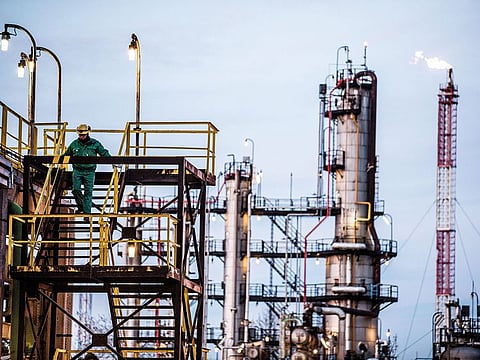An oil price war that achieves nothing
Hopefully, oil producing nations will see a need to make compromises

Following output cuts and counter measures taken that caused oil prices to nose dive, to $30 a barrel levels from $65, the world has entered a new phase of the price war. It can only mean further deterioration for prices.
This will in its own way stir up competition among major exporters for the traditional markets. It is widely known that Asian markets are the main consumers of Gulf oil, while Europe is the main importer of Russian and North African oil. The Americas are also the target of Venezuela and Canadian oil exports.
As the price war intensifies, this traditional pattern may change if new production levels are not agreed within OPEC+ countries. This war has begun to take shape slowly through the many measures and discounts some oil-exporting countries have offered in recent days.
After Russia announced it is increasing production, Saudi Arabia announced it is to boost production to 13 million barrels, while the UAE will go up to 5 million barrels a day and Kuwait to 4 mbd.
It goes without saying that these additional quantities need marketing outlets, which means increased competition to make a grab for new buyers. After Russia moved to increase its exports to China, Saudi Arabia pledged, according to Bloomberg, to provide European refineries with up to three times of their imports from the kingdom.
This prompted Aramco to reduce prices for these countries to as low as $25, which poses a challenge to Russian oil, while Bahri, the National Shipping Company of Saudi Arabia, hired six tankers to ship 12 million barrels to the US.
More of the same
Such moves will continue in the near term and lead to further deterioration in prices. It will result in major repercussions on the economies of oil-exporting countries, setting themselves up for massive budget deficits.
These have already begun to take effect. The majority of Gulf currencies are linked to the US dollar, which grant them stability and provide protection against fluctuations. Russia will be among the most affected by the war.
In addition to its lower revenues from oil, its currency is moving into decline. The ruble has dropped to 72 to the dollar, which will raise inflation and raise prices of goods and services.
Pre-emptive cuts
This is why Saudi Arabia decided to reduce public expenditures by 20 per cent to cut the budget deficit. This is expected to be emulated by the rest of the oil producing countries to avoid ballooning deficits and exceed the “safety” level of 3 per cent of GDP. All of these consequences could have been avoided if all stakeholders remained committed to quiet diplomacy to reach compromises.
Yet, it is still highly likely to happen thanks to the good relations binding major countries of OPEC+. They have already cooperated to maintain a fair price over the past four years, and this represented a safety valve for all of them. Wisdom requires a quick return to the previous agreement to avoid a destructive war that will paralyze the economies of OPEC+ countries.
They have to instead base their relations on the principle of common interests that govern countries and their international relationships. Certainly, many foreign powers will try to fan this war out of their self-interests as well to hit two birds with one stone. This is why OPEC+ countries need to be awake and vigilant.
There are positive signs looming on the horizon. Russian Energy Minister Alexander Novak has called for a meeting of OPEC+ countries through video-conferencing (because of coronavirus fears). We hope the rest of the countries will respond to his invitation to end this devastating state of affairs and bring oil prices back to acceptable levels and benefit all.
Dr Mohammad Al Asoomi is a UAE-based specialist on energy and Gulf economic affairs
Sign up for the Daily Briefing
Get the latest news and updates straight to your inbox







